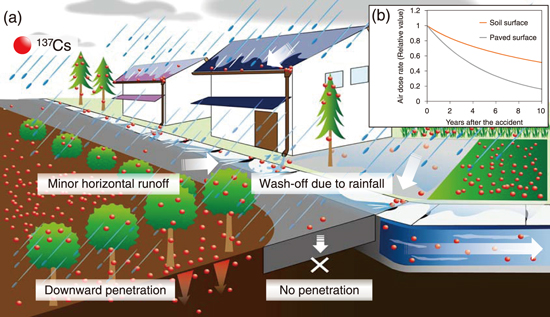
Fig.1-33 (a) Overview of the behavior of 137Cs in urban areas and (b) decreasing trend of air dose rate estimated considering the behavior of 137Cs
The decreasing trend of air dose rates in urban areas is important for predicting future exposure doses and for decision making regarding the lifting of the evacuation-order zone around the TEPCO’s Fukushima Daiichi NPS. Previous studies reported that air dose rates decrease faster in urban areas than in areas under other land use, such as forests and agricultural land, but the mechanism of this decrease has not been understood. This study reviewed previous studies on the behavior of radiocesium, which is a major source of radiation, in urban areas and evaluated the relationship between its behavior and the decreasing trend in air dose rates.
Unlike other land uses such as forests and agricultural land, urban areas are covered by artificial surfaces such as paved surfaces and houses in addition to the soil surface. Air dose rates decrease due to radioactive decay of radionuclides (especially radiocesium). Air dose rates also decrease due to the behavior of radionuclides on the ground surface, such as increased shielding by the soil due to downward infiltration of radionuclides, and horizontal wash-off associated with rainfall. While radioactive decay occurs universally, the behavior of these radionuclides differs between soil and artificial surfaces. Fig.1-33(a) shows an overview of the behavior of 137Cs in urban areas. Most of the soil surfaces in urban areas are flat areas in parks and gardens, and since flat areas are not subject to soil erosion, little horizontal wash-off occurs during rainfall events, but there is a little downward penetration. On paved surfaces, in contrast, 137Cs has little downward penetration, but is washed away with rainfall, resulting in reduction of inventory with time. Thus, downward penetration of radiocesium on soil surfaces and horizontal wash-off of radiocesium on artificial surfaces contribute to the reduction of air dose rates.
Fig.1-33(b) shows decrease in air dose rate over time based on the previously reported downward migration rate of 137Cs on flat soil surfaces and the decrease rate of 137Cs inventory on paved surfaces. The faster decrease in air dose rates on paved surfaces than on soil surfaces indicates that the wash-off of 137Cs on artificial surfaces is more effective in reducing air dose rates. Therefore, artificial surfaces are thought to contribute to faster reductions in air dose rates than other land uses.
This study was partially supported by Research project on the Health Effects of Radiation organized by Ministry of the Environment, Japan.
(Kazuya Yoshimura)
<Previous: 1-16 | Next: 2 Research on Nuclear Safety and Emergency Preparedness>